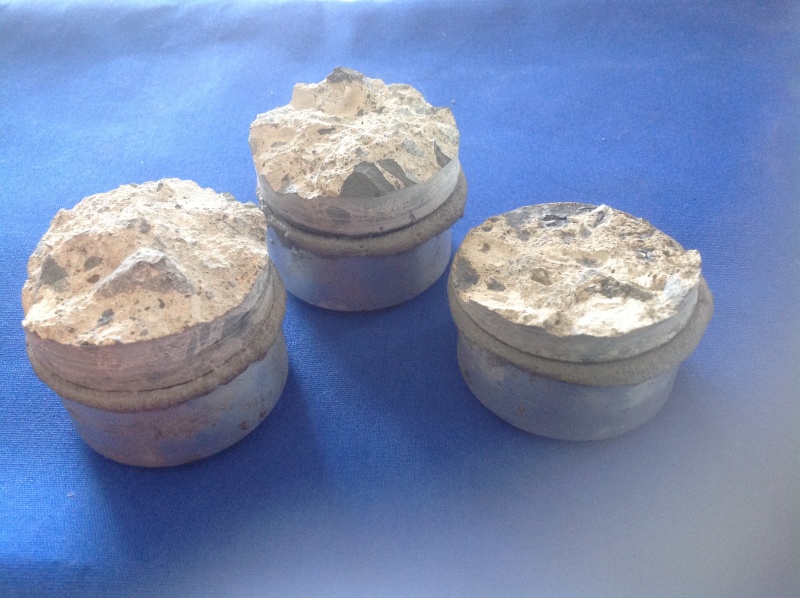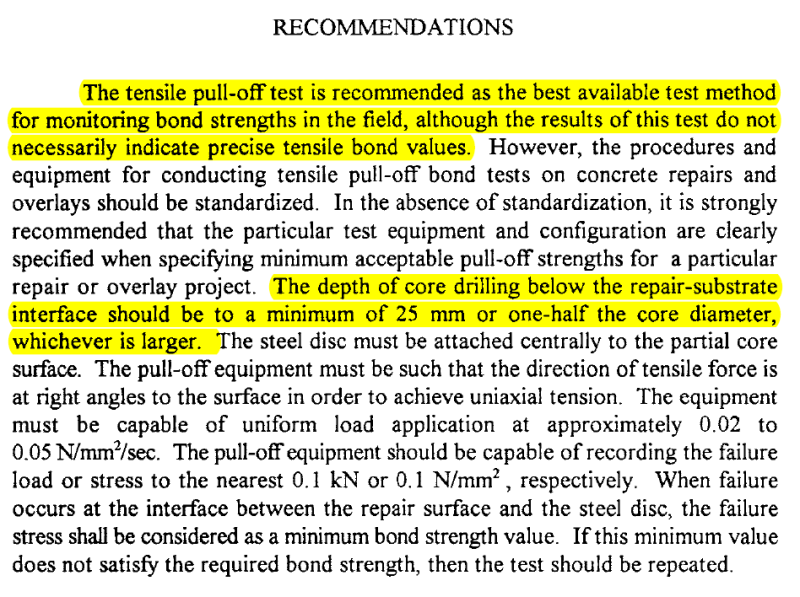ajk1
Structural
- Apr 22, 2011
- 1,791
What tensile bond strength should be specified for bonded structural topping where the topping contains rebar and is to act compositely with the base slab? The topping includes but is not limited to the top steel repair areas in the base slab which is a two-way flat slab.
CSA A23.1 specifies 0.9 MPa "minimum" for bonded toppings (see attached) but is vague about what this really applies to, leaving it up to the owner (i.e the structural engineer) to decide if more than the minimum should be specified.
0.9 MPa sounds like what might perhaps be appropriate where the topping is not structural, but seems low these days when 2.0 MPa can be achieved with a shotblast and good bonding agent. If the topping is bonded at 0.9 MPa, I wonder if that is good enough for the punching shear area around the supporting columns of a two-way flat slab. So my question is:
What tensile bond strength should be specified for bonded structural topping where the topping contains rebar and is to act compositely with the base slab?



